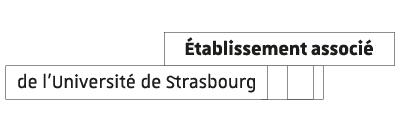Here are some other points to bear in mind when looking for accommodation:
Visiting hours
Most visits take place in the early evening (after work or school). However, this is not the best time to see the brightness of the property.
In order to assess the brightness, ask to visit the flat at different times (lunchtime or during the day). However, visiting a flat in the early evening or in bad weather will also allow you to assess your artificial lighting needs.
The exposure of the dwelling
The exposure of a house is mainly defined by its geographical location.
- South and south-west exposure: perfect for the living room, which is the most used room and therefore needs the most light;
- East exposure is particularly suitable for bedrooms. They will be sunny without being too exposed to the heat, as the sun's rays are only present in the morning;
- Northern exposure: offers less light. Northern exposure: offers less light, so it is colder in north-facing rooms. However, this is suitable for bathrooms and kitchens;
- Western exposure: The rooms are not exposed to the full heat and you will enjoy the sunset.
- A "through" orientation is also nice. For example, the living room facing south (or west) and the bedrooms facing north (or east). This double orientation also allows good ventilation of the rooms.
► Tip: Download a compass application on your smartphone to check the exposure of the accommodation you are visiting.
Checking the windows
As soon as you enter the house you are visiting
- Check the number and size of the windows. The brightness of a flat is also determined by the size and number of windows.
- Ask if they are at least double-glazed; this will help to keep out noise and cold;
- Check that they are equipped with shutters or blinds to give you privacy and protect you from the sun and heat in summer. Finally, open and close them several times in a row to check that they work properly.
- Be aware of "blind" (windowless) rooms. This is very common in bathrooms and separate toilets and sometimes in kitchens. These rooms should be well ventilated to remove moisture and odours.
► Tip: In general, do not hesitate to open and close doors and cupboards several times, to run the taps to detect any malfunctions and to turn on the lights.
Adapting the heating system to the size of the dwelling
In order to assess the energy consumption of your home, you can use the energy performance report (DPE). It must be carried out in all residential properties and given to the tenant. It is easy to read thanks to two labels with 7 classes from A to G (A for the best energy performance and G the worst).
► From 1 January 2023, housing that consumes more than 450kwh of energy per square metre per year will be banned from being rented out (Level G housing). These homes are considered to be energy wasters. Refer to the energy performance diagnosis (DPE) to find out what level of consumption the property you are visiting has.
The location of the accommodation
Pay close attention to :
- The distance between the house and other buildings. This will affect the brightness of your future home and your privacy.
- The location of your future home in the building: in the city, the lower the home is located, the less light it gets.
- The presence of vegetation: large trees near the windows can produce shade and therefore affect the luminosity of the dwelling even if it is well exposed.
► Tip: To make sure that shadows from outside elements will not be a problem, test whether it is possible to see the sky from the middle of the room. If not, move progressively closer to the window to see how far away it becomes. The more difficult it is to see the sky, the darker the dwelling will be.
The state of the building inside and outside
Checks the general state of health (cleanliness) of the building on the outside and inside: presence of mould, ventilation system, sound and heat insulation.
The dynamics of the area
quiet, traffic, transport time, access to shops, nightlife
The presence of noisy activities
Ask the neighbourhood about noisy night-time activities: restaurants, bars, etc.















